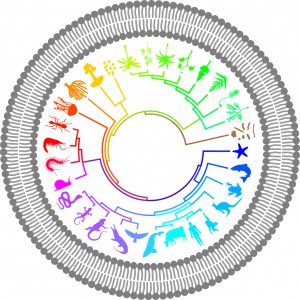
The idea that the whole is greater than the sum of the parts is often used in Gestalt theory to describe human perception. However, this concept of synergy has its place in general biology as well. In a recent BMC Biology article, William Ryu and colleagues describe a novel assay in C elegans whereby monitoring multiple behaviours simultaneously shows that, surprisingly, worm thermosensory behaviour is governed by a variable – but not an increasing – number of genes, depending on the severity of the heat applied.
It is obviously critical for organisms to respond appropriately to adverse environmental conditions. Nematode worms have developed a very characteristic response to excessive heat that reorients them away from the noxious stimulus. In short, when a worm senses heat, it moves backwards, turns and resumes its forward movement in the new direction. Previous studies have characterized the genes by heating up a worm and looking at how a particular aspect of this sequence of movements changes as a function of genetic mutation. In today’s paper, instead of looking at only one response, the authors describe an assay that measures multiple aspects of the worm’s response simultaneously. This delivered the surprising result that unique combinations of molecules define responses to different increases in temperature, rather than that there is a single mechanism that scales with the heat.
The authors have not yet gone for the circuitry behind these variable responses. The next step will be to extract the specific genetic influences active at different temperatures. But now that we are starting to look at things on a systems-level, how many more surprises are in store for us?
Latest posts by Shannon Harper (see all)
- A flick of the tongue and the chemistry of predator-prey interactions - 1st March 2013
- Opening a new can of worms for sensory perception - 1st November 2012
One Comment